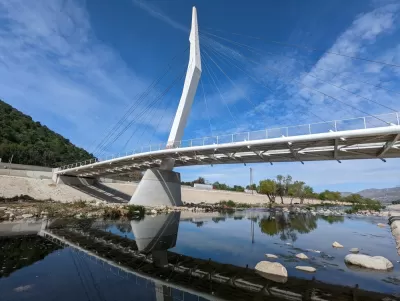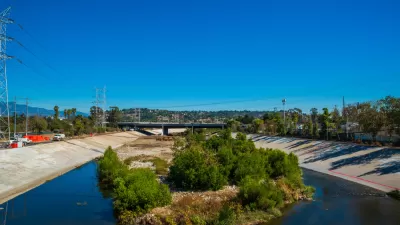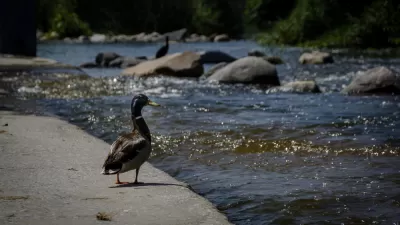The L.A. County Board of Supervisors voted to approved a new master plan for the L.A. River—the “Reimagined River.”

The Los Angeles County Board of Supervisors approved a new master plan for the Los Angeles River earlier this month, to replace the Los Angeles River Revitalization Master Plan approved by the county in 2007.
According to an article by Pilar Marrero for Ethnic Media Services, the Board of Supervisors voted unanimously to approved the Los Angeles River Master Plan, dubbed “The Reimagined River,” despite a last-minute decision by local environmental and community organizations to withdraw support for the plan the day before the board vote.
“During a press conference at Maywood Riverfront Park, representatives of these groups had harsh words for the Master Plan and the county leadership,” reports Marrero.
According to Public Works Department Executive Director Mark Pastrella, the discord comes from a question of how much concrete to remove from the river.
“[Pastrella] added that the channel provides protection to residential areas that ‘almost every year, face tremendous flows of waters,’” according to Marrero. “Removing concrete would require building more dams, reducing habitats, and displacing more than 100,000 people now living near the river, he added.”
The article also notes one of the more controversial components of the new master plan—a proposed “South East LA Cultural Center,” built on a platform park elevated over the river. Frank Gehry, whose firm had a controversial role in the master plan process, originally proposed the cultural center project.
For more background on the master plan, see an article by Alejandro JSM Chavez and Diana Martinez published by the San Fernando Valley Sun a few days before the board’s vote. See also previous coverage of the Los Angeles River Master Plan.
FULL STORY: County Supervisors Approve LA River Master Plan and Land Bank for Affordable Housing

Trump Administration Could Effectively End Housing Voucher Program
Federal officials are eyeing major cuts to the Section 8 program that helps millions of low-income households pay rent.

Planetizen Federal Action Tracker
A weekly monitor of how Trump’s orders and actions are impacting planners and planning in America.

Ken Jennings Launches Transit Web Series
The Jeopardy champ wants you to ride public transit.

Crime Continues to Drop on Philly, San Francisco Transit Systems
SEPTA and BART both saw significant declines in violent crime in the first quarter of 2025.

How South LA Green Spaces Power Community Health and Hope
Green spaces like South L.A. Wetlands Park are helping South Los Angeles residents promote healthy lifestyles, build community, and advocate for improvements that reflect local needs in historically underserved neighborhoods.

Sacramento Plans ‘Quick-Build’ Road Safety Projects
The city wants to accelerate small-scale safety improvements that use low-cost equipment to make an impact at dangerous intersections.
Urban Design for Planners 1: Software Tools
This six-course series explores essential urban design concepts using open source software and equips planners with the tools they need to participate fully in the urban design process.
Planning for Universal Design
Learn the tools for implementing Universal Design in planning regulations.
Heyer Gruel & Associates PA
Ada County Highway District
Institute for Housing and Urban Development Studies (IHS)
City of Grandview
Harvard GSD Executive Education
Toledo-Lucas County Plan Commissions
Salt Lake City
NYU Wagner Graduate School of Public Service





























